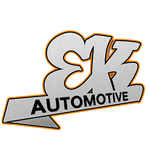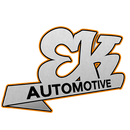Services
Artistically Different
Where Auto Repair Meets Art, Culture, and Honest Service








© 2023 Ek Automotive. All Rights Reserved | Website managed by
Shopgenie
Follow us
Our Shop
Services
List of Services
-
Oil ChangeOil Change Oil Change
-
Tire ServiceTire Service Tire Service
-
Brake RepairBrake Repair Brake Repair
-
Air Conditioning ServiceAir Conditioning Service Air Conditioning Service
-
Scheduled MaintenanceScheduled Maintenance Scheduled Maintenance
-
Computer DiagnosticsComputer Diagnostics Computer Diagnostics
-
Battery ReplacementBattery Replacement Battery Replacement
-
Exhaust/Muffler RepairExhaust/Muffler Repair Exhaust/Muffler Repair
© 2023 Ek Automotive. All Rights Reserved | Website managed by
Shopgenie
Follow us
Our Shop
6595 N Ogallah Ave, Chicago, IL 60631, United States of America
Mon - Fri 8:00 AM - 6:00 PM








